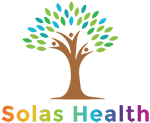
What Is the Difference Between Harm Reduction and MAT?
Many people who work with addicted persons help people make decisions about their recovery. Many programs in different cities across the US run harm reduction programs. Some programs that help people live substance-free offer Medication-Assisted Treatment. These two things are not the same.
While harm reduction can be a tool to help struggling addicted persons survive or prevent the consequences of their drug use, the other is a tool to help them stay substance-free long term.
What is Harm Reduction?
Harm reduction reduces harm for a person who currently uses drugs. People who work in harm reduction do their best to help others survive long enough to seek recovery. They also focus on individuals' dignity, offering them tools to stay safe or reverse relapse. This means helping people learn how to use Narcan, the opioid-reversal device, and other tools.
Some cities offer clean needle programs and other sanitary supplies, such as alcohol wipes, as a tool for harm reduction. Many diseases can be spread via shared needles. People who use intravenously are at a higher risk of infection than other drug users. Keeping things as clean as possible can help save a life. If every person has a needle, this can prevent outbreaks of diseases that spread through needles.
While not yet legalized in every state, fentanyl testing strips can detect the presence of fentanyl in other drugs, such as cocaine or heroin. Much of the drug supply in the US has been adulterated with fentanyl, a highly-potent opioid drug that is the top cause of overdoses.
Some harm-reduction programs offer a clinical environment for drug users to stay safe while ingesting their drug of choice.
Differences Between Harm Reduction And Medication-Assisted Treatment
There are many differences between harm reduction and MAT.
Harm reduction helps reduce the worst consequences of addiction. It concentrates on helping people while they are still using their drugs. Harm reduction saves lives by providing information and empowering drug users to care for their health.
Many cities have found that harm reduction also plants a seed for people who will one day get sober.
Medication-Assisted Treatment is not harm reduction. It is, in fact, a treatment for people who have stopped using drugs. It helps relieve cravings and allows a person to concentrate on their recovery. Medication, such as Suboxone, can help provide relief from cravings. But treatment alongside medication statistically has the best outcomes for long-term sobriety.
What Does Medication-Assisted Treatment Do?
Medication-Assisted Treatment helps relieve symptoms of withdrawal and cravings.
One such drug is Suboxone, a popular MAT used for opioid use disorder. It works as an opioid antagonist, negating the effects of any opioid. This works because Suboxone prevents them from activating pain receptors. This helps reduce cravings and physical withdrawal symptoms.
Benefits of MAT In Treatment and Recovery
The ultimate goal of MAT is long-term sobriety and recovery for the individual. This includes learning new coping skills, learning about and treating addiction, and finding new goals in life.
MAT has been shown to increase completion and participation rates in both long-term and short-term treatment programs. People who use MAT can concentrate on their recovery and work towards new goals in life. Even if relapse is a part of their journey, studies show that MAT can decrease relapse rates and reduce petty crime among formerly addicted persons.
MAT is an essential tool for forward-looking people with substance use disorder. People who experience fewer cravings and withdrawal symptoms are more likely to finish their treatment programs. For pregnant patients, there are better outcomes for the mother and child. People who use MAT are more likely to return to work or find new employment once they have finished treatment.
People who complete treatment using MAT often continue to stay on it. Some people may continue taking medication for weeks, months, or even years. The decision is between a healthcare provider and their client. Many people take pills every day for health issues or mental health. MAT is another tool that helps people with substance use disorders stay the course.
MAT and harm reduction are essential tools to help people with substance use disorder. MAT, however, is an actual treatment and is considered the “gold standard” of treatment for opioid use disorder by the Food and Drug Administration.
Getting Help For Addiction
We offer Medication-Assisted Treatment for people struggling with opioid use disorder. OUD can cause problems with relationships, work, and even the law. If you or somebody you love is struggling with opioids, please reach out! We want to give you the tools to help you reclaim your life. Call us at 910-296-7246 to learn more.
If you are in need of help, please call us at: 910-295-7246 or message us.
Categories
Treatment
